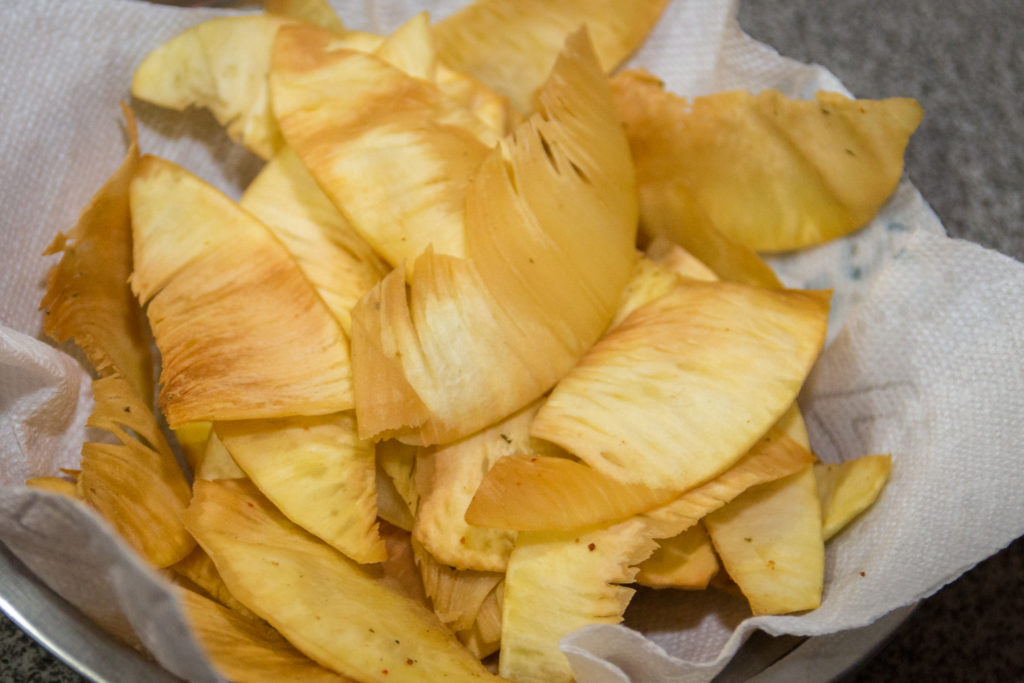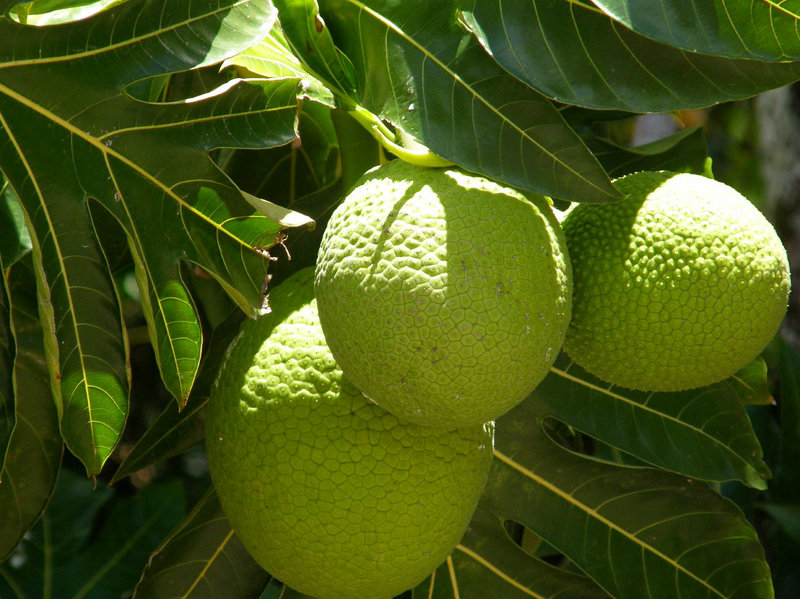Most Guyanese know about the famous fried breadfruit; the crispy, salted taste of a fried breadfruit keeps one coming for more. Some though, prefer it boiled and eaten along with ground provision, there are many ways it can be consumed. But, what is a breadfruit and where did it come from?
About The Breadfruit
The breadfruit is a species of flowering tree in the mulberry and jackfruit family. It is believed to be a domesticated descendant of Artocarpus camansi (breadnut) originating in New Guinea, the Maluku Islands, and the Philippines. It was initially spread to Oceania via the Austronesian expansion. It was further spread to other tropical regions of the world during the Colonial Era. British and French navigators introduced a few Polynesian seedless varieties to Caribbean islands during the late 18th century. Today it is grown in some 90 countries throughout South and Southeast Asia, the Pacific Ocean, the Caribbean (Guyana), Central America and Africa.
Did You Know? The name was derived from the texture of the moderately ripe fruit when cooked, similar to freshly baked bread and having a potato-like flavor.
Scientific Classification Of The Breadfruit
Breadfruit – Artocarpus altilis [Scientific Name]
- Kingdom: Plantae
- Clade: Angiosperms
- Clade: Eudicots
- Clade: Rosids
- Order: Rosales
- Family: Moraceae
- Genus: Artocarpus
- Species: A. altilis
Breadfruit Production In Guyana
- Production – The breadfruit is a relatively minor fruit in Guyana, with almost the entire production volume marketed domestically. Small amounts are also exported to Canada and the U.S. The trees take from 3 to 7 years to begin production. Once in production, the tree sets fruit more or less continuously, with fruit in all stages of development being present on the tree year around. However, there are generally two or three main fruiting periods.
- Harvesting – Breadfruit is typically ready for harvest about 3 months after flowering. The proper stage for harvesting depends on the intended use. It should be harvested when green in color and firm in texture if it is to be used as a starchy vegetable. The fruit should be left to ripen and harvested at a later stage when used as a dessert. The skin color of ripe fruit becomes yellow-green with red-brown areas. In addition, the stem of ripe fruit becomes yellow-green in color.
- Harvest Methods – Harvesting involves climbing the tree and/or using a long pruning pole, where the fruit is cut and caught by hand or in a net, before hitting the ground. Where the fruit can be reached, they should be harvested by snapping the stem of the fruit off the tree at the point adjacent to the branch, and not the fruit.
Tip: Breadfruit should never be knocked from the tree or dropped to the ground, as the resultant bruising will cause rapid softening and a significant reduction in market life.
Breadfruit Cultivation In Guyana
According to the CEO of NAREI, Dr Oudho Homenauth, at least 30 acres of land in Regions Four, Five, Seven and Ten have been secured over the past two years for the cultivation of breadfruit in an effort to promote food security and value adding.
Over 1000 breadfruit seedlings were acquired from Global Breadfruit and while hundreds have been distributed to farmers in various Regions, NAREI also cultivated a significant number. The President of Guyana, Mr. David Granger said at the National Tree Day activity in 2015, “We did not wait on a directive…We started looking at increasing breadfruit production…But, to do that we needed quality planting materials…Also, we needed to know what we have and so we approached the FAO (Food and Agriculture Organization) for assistance in this regard.” In harmony with this, breadfruit expert Dr Roberts-Nkrumah, accompanied by a team from NAREI, visited various breadfruit-producing communities in Regions Four and Five. This activity allowed a firsthand look at the various varieties of breadfruit that are available locally.
How To Cook Breadfruit In Guyana
Fried Breadfruit

Fried Breadfruit Chips
Ingredients:
- 1 Breadfruit
- Oil for deep frying
- Salt
Method:
- Peel the breadfruit, then cut into even pieced about 1/2 inch thick.
- Parboil in salted water, then drain.*
- Fry in oil until golden brown and crisp.
- Now drain, add salt to taste, and serve hot!
*Note: You do not have to parboil, you can just chip and fry it. However, you can chip it very thick, boil it along with some ground provision, add salt and fry it up with a little oil, onion, scallions and pepper. That is called boiled and fried breadfruit.
Yes, You Can Also Eat It Raw
Nutrition Of Breadfruit
Breadfruit is 71% water, 27% carbohydrates, 1% protein and negligible in fat. In a 100 gram amount, raw breadfruit is a rich source (35% of the Daily Value, DV) of vitamin C, and a moderate source (10% DV each) of thiamin and potassium, with no other nutrients in significant content.
Breadfruit In Guyana
Breadfruit is closely related to the breadnut, from which it might have been naturally selected. It is noticeably similar in appearance to its relative of the same genus, the jackfruit (Artocarpus heterophyllus). Breadfruit has hundreds of varieties and thousands of common names varying according to its geographic distribution. The closely related breadnut can be distinguished from the breadfruit by having spinier fruits with numerous seeds.
Breadfruit is produced and cultivated in Guyana; a tree can be found in the backyard of many, bountifully bearing the delicious breadfruit. It can be consumed differently, green (unripe) or yellow-green (ripe), it can be fried or boiled and fried. What ever way you choose to eat it, you can be sure that it will satisfy those cravings of a go-to snack or even a meal. The texture is smooth and creamy, it is a quick and easy edible fruit. Also, they are very nutritious and healthy for you. Though they are distributed in many countries, it is a privilege to have them grown and consumed in Guyana.
Article References:
- https://www.guyanatimesinternational.com/?p=47211
- http://agriculture.gov.gy/wp-content/uploads/2016/01/Breadfruit.pdf
- http://www.guyanesefood.com/how-to-cook-fried-breadfruit-guyanese-style.html
- https://en.wikipedia.org/wiki/Breadfruit
- Main Image Source: https://www.npr.org/sections/thesalt/2016/08/09/487094806/productive-protein-rich-breadfruit-could-help-the-worlds-hungry-tropics







